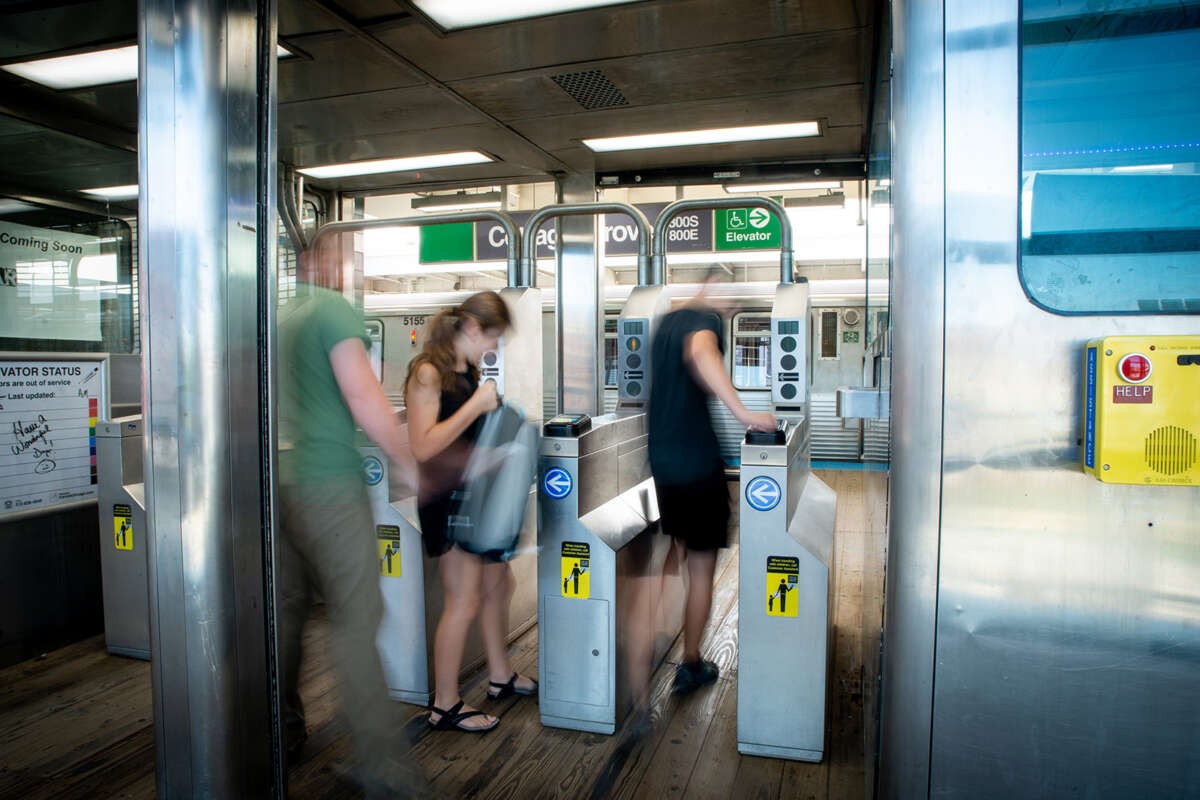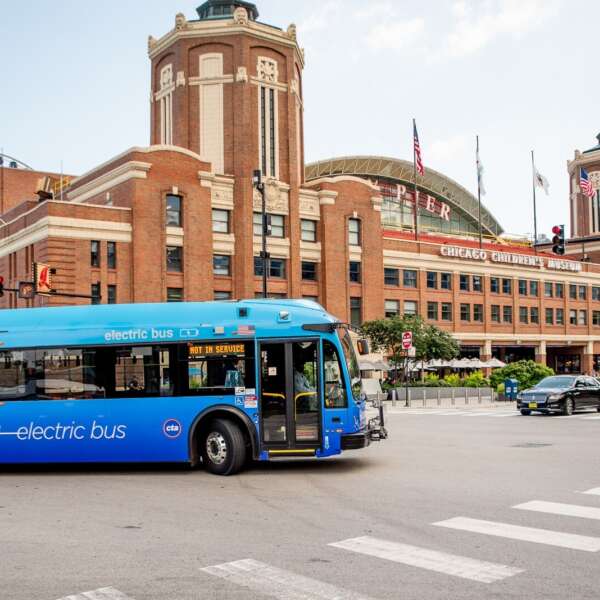How the Chicago region’s bus and rail service is adapting to the changing needs of riders
April 6, 2023
April 6, 2023

This post is one in a series exploring the Agenda for Action and Advocacy in Transit is the Answer, the RTA’s new regional transit strategic plan. Together with our partners, working toward the items on this list will move us closer to the plan’s vision of a public transportation system that is safe, reliable, and accessible that connects people to opportunity, advances equity and combats climate change.
Since the outbreak of the pandemic, Chicagoland’s relationship with transit has changed drastically. Continued remote work trends mean that fewer people are using transit during the traditional weekday rush and riders are relying on service outside rush hour more than before. The entire transportation industry—both locally and nationally—faces significant workforce challenges, meaning that reliable service is more difficult to achieve. As the needs of our riders and labor force change, so too must our plan for the future of regional transit.
This is why adapting bus and rail service to meet the changing needs of riders is a key component of the advocacy and action agenda featured in Transit is the Answer. For the system to continue to grow and thrive, transit operators will need to prioritize ensuring riders can access transit when they need it for work, school, and other essential and social trips.
Our service partners at CTA, Metra, and Pace continue to work to adjust operations to meet these changing rider dynamics. New pilot programs, enhanced scheduling, and other initiatives to reimagine how transit works are underway, offering riders improved service across the region.
CTA, Metra, and Pace have introduced new service programs and altered current services in response to changes in ridership patterns.
New post-pandemic travel patterns have led transit agencies to evaluate their existing routes and make sure they are connecting people to where they need to go all day long. This includes a particular focus on people living in low-income neighborhoods that historically lack access to fast and frequent transit service. Prior to the pandemic, 39% of transit riders across the region came from households with incomes under $50,000. That share had grown to 50% as of 2021, underscoring the importance of transit service for the region’s residents experiencing low incomes.
A strong and resilient workforce is needed to implement these changes to transit service across the region, but transit agencies have struggled to recruit and retain operators since the start of the pandemic. According to the American Public Transportation Association, 96% of public and private transportation agencies face serious staffing challenges and 84% of those report that workforce shortages have negatively affected services.
The Agenda for Advocacy and Action in Transit is the Answer lays out a path to position the system for long-term success by seeking new funding, making improvements for riders, and supporting communities working to increase transit access.
Leadership from a diverse group of elected officials and community leaders is needed to achieve meaningful change. Join our coalition to advance this agenda and improve transit for the future.
Subscribe to our Newsletter
Related Articles
 How to navigate the Democratic National Convention using public transportation
How to navigate the Democratic National Convention using public transportation
The Democratic National Convention is coming to Chicago’s United Center and McCormick Place August 19-22, 2024, and with it will come roughly 50,000 visitors...
July 25, 2024 How to use transit to explore museums in the Chicago region
How to use transit to explore museums in the Chicago region
The Chicago region is home to countless accessible cultural and educational amenities including 150 museums across several counties. The most cost-effective ...
July 10, 2024 RTA welcomes summer 2024 interns
RTA welcomes summer 2024 interns
This summer the RTA welcomed six new interns from Chicago-area universities. The interns work in various departments including Communications, IT, Strategic ...
June 27, 2024 Four months into the Access Pilot Program, over 3,000 Metra riders experiencing low incomes enrolled for more affordable fares
Four months into the Access Pilot Program, over 3,000 Metra riders experiencing low incomes enrolled for more affordable fares
On February 1, RTA launched the Access Pilot Program in partnership with Cook County and Metra, extending reduced fares to eligible Metra riders experiencing...
June 13, 2024 How to use transit to celebrate Pride Month in the Chicago region
How to use transit to celebrate Pride Month in the Chicago region
June is Pride Month, a time to honor and celebrate Lesbian, Gay, Bisexual, Transgender, Queer and Questioning (LGBTQ+) individuals in the United States. The ...
May 31, 2024 How to use transit to enjoy summer in the Chicago region
How to use transit to enjoy summer in the Chicago region
Summer weather is here and although the season can feel short for many Chicago residents, there is no shortage of fun to be had. To celebrate the sunshine, t...
May 24, 2024